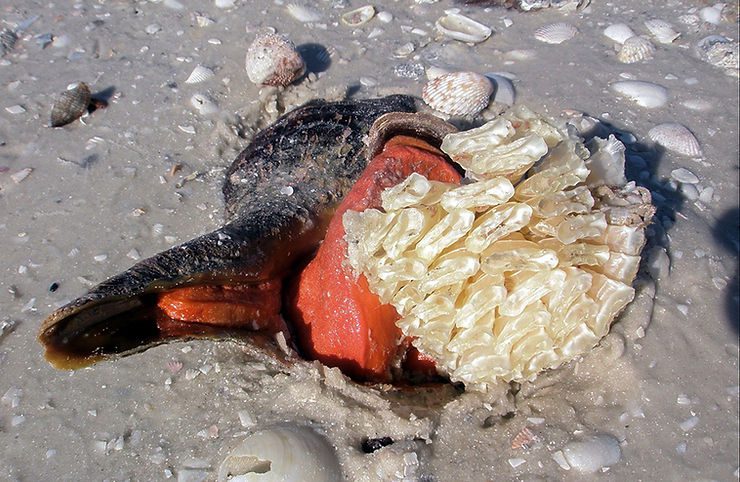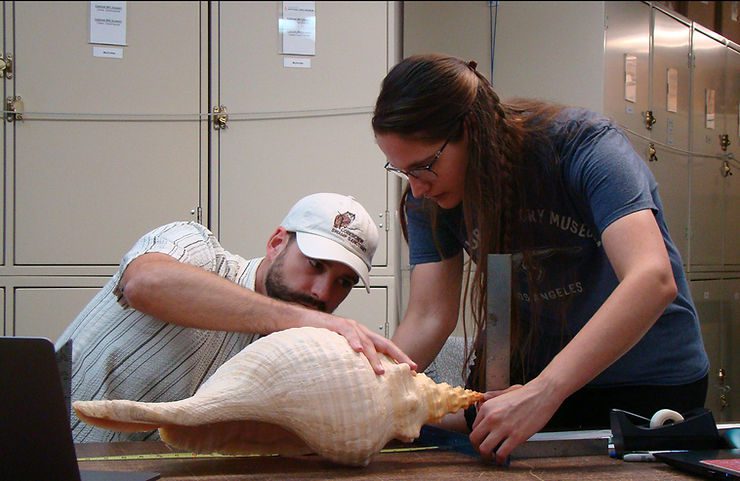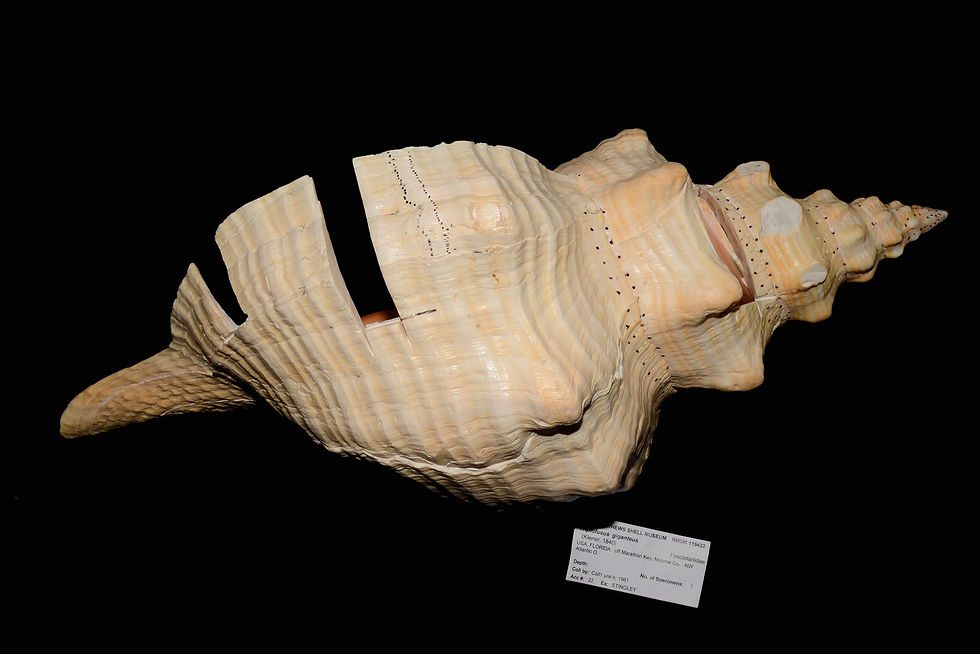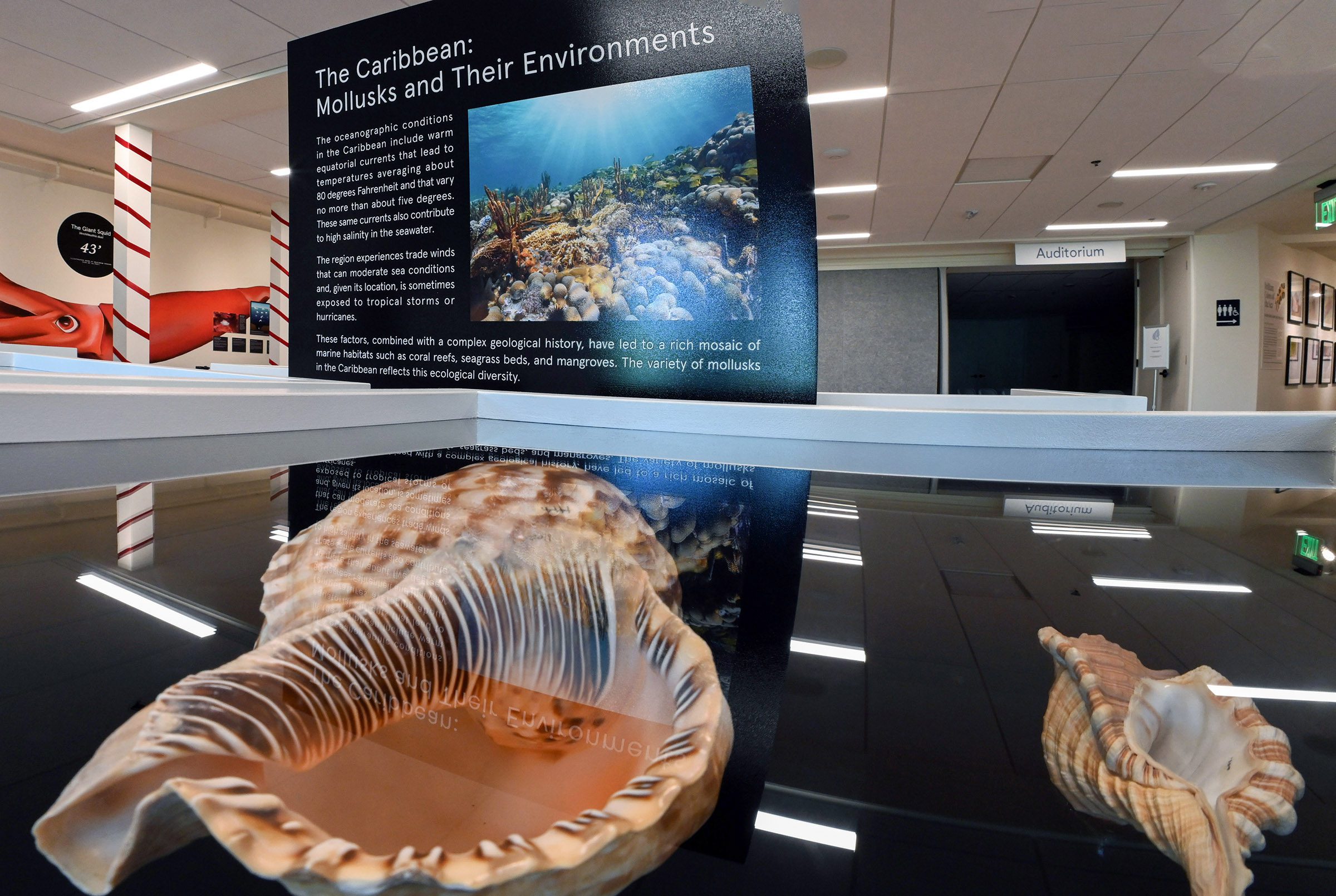This week, Dr Greg Herbert (University of South Florida, Tampa) and collaborators published a much-awaited peer-reviewed article on the lifespan of the Horse Conch, Triplofusus giganteus. They also estimated age at which females of the species produce their first spawn.
 Female Horse Conch laying mass of egg capsules, Caxambas Pass, Florida. Photo by Amy Tripp.
Female Horse Conch laying mass of egg capsules, Caxambas Pass, Florida. Photo by Amy Tripp.
In their study, the authors used stable oxygen and carbon isotopes sclerochronology (the dating of hard biological structures such as bones, corals, and shells) to garner information on life cycles. Among other samples, included in their study were two large Horse Conchs from the National Shell Museum collection, measuring 460 and 475 mm (about 18 and 19 inches).
 Authors Stephen Hesterberg and Nicole Seiden measuring world-record Horse Conch at the National Shell Museum in 2019. Photo by Lorin Buckner.
Authors Stephen Hesterberg and Nicole Seiden measuring world-record Horse Conch at the National Shell Museum in 2019. Photo by Lorin Buckner.
These two behemoths were estimated to be 13 and 11 years old at time of death, respectively. Based on those data, the world record Horse Conch (on display at the Museum), measuring 606 mm (23.9 inches), would have lived only 16 years. Those are much shorter lifespans than previously informed by casual estimates based on large shell size. Herbert and collaborators also propose that females mature later in life and have fewer spawning events than originally thought.
 BMSM 119422, one of the Museum’s Horse Conchs included in Herbert et al.’s analyses. Photo by José H. Leal.
BMSM 119422, one of the Museum’s Horse Conchs included in Herbert et al.’s analyses. Photo by José H. Leal.
This would make populations of the species particularly susceptible to overharvesting, as the larger, reproductively fit females are usually the first to be collected, given their size. There is no limit for commercial harvest of Horse Conch in Florida. The authors conclude that inclusion of the species in the list of protected marine life would limit the recreational harvest of HC and help conserve the remaining populations of the species in the Sunshine State. Read the article in the journal PLOS One here. Writer and journalist Cynthia Barnett covered the topic for National Geographic, read it here.


